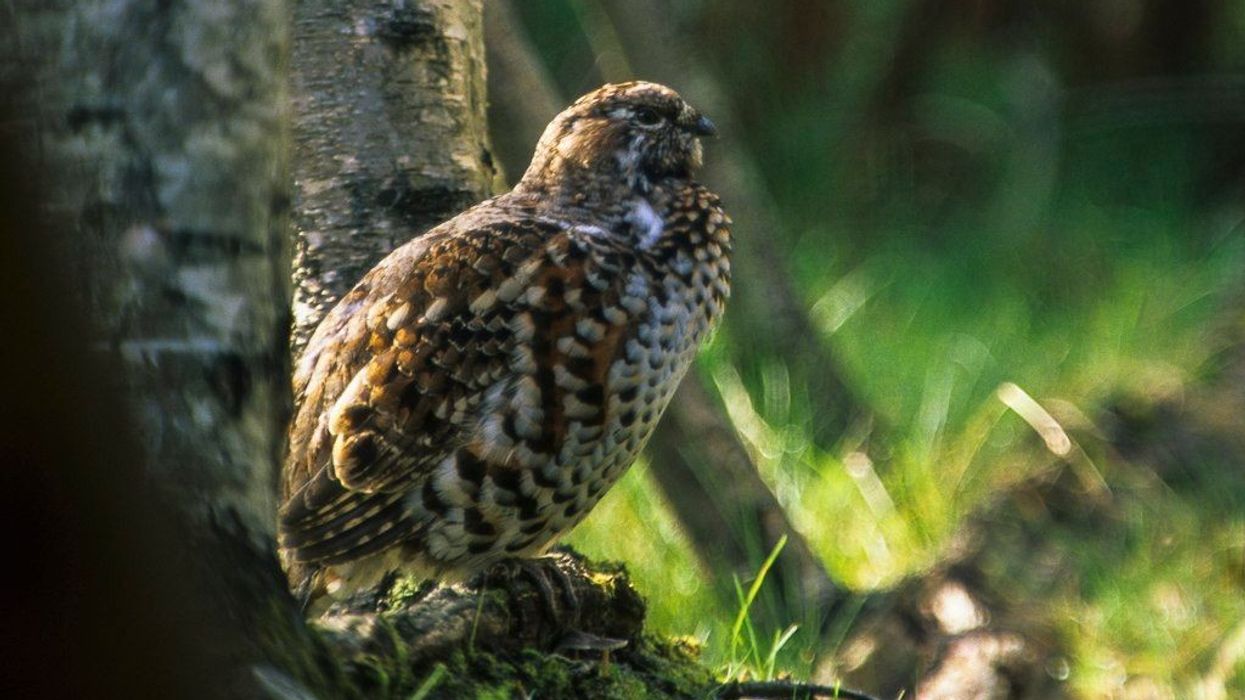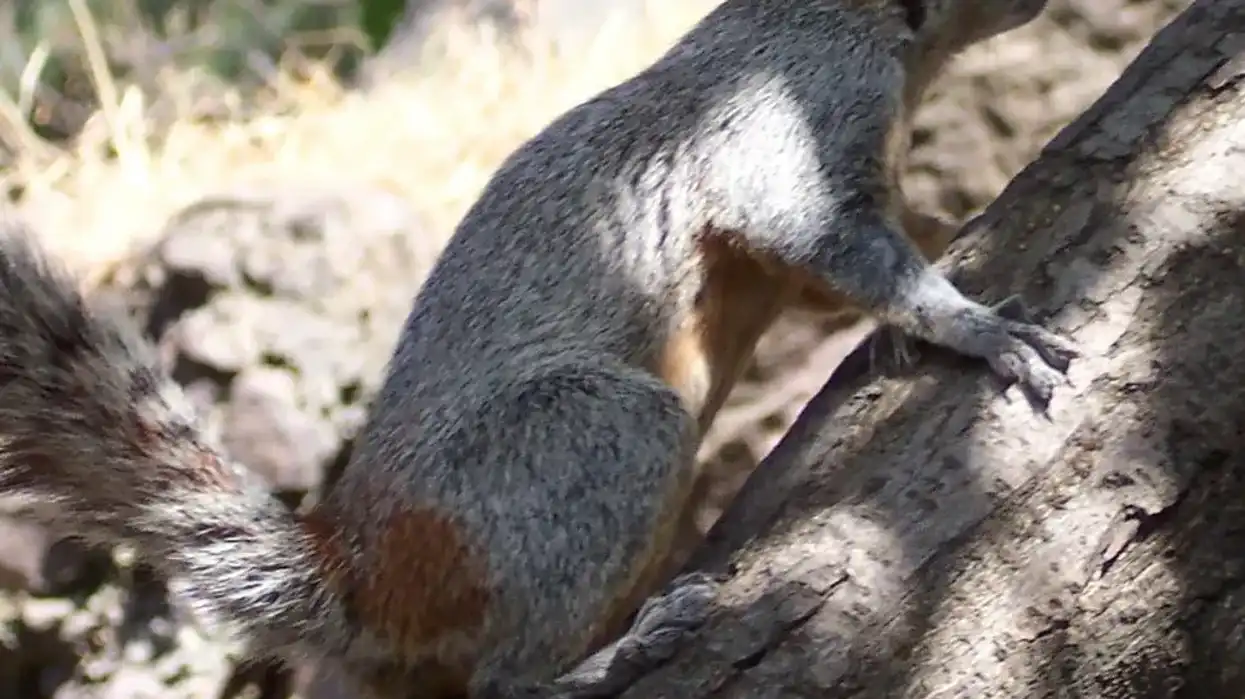With a slightly longer and furry tail, the fox squirrel, Sciurus niger as is its scientific name, are cute animals of the rodent category. They are mainly found in the North American regions. They are known to make their nest or den in the hollow spaces and cavities of a huge tree especially in the forest areas.
The interesting fact about these diurnal animals is that after the male and female mating process, the male leaves, and the pregnant female fox squirrel is the one who stays back to take care of the baby that would be born after 44-45 days of the incubation period.
Although the nest-time is usually inactive for these squirrels, the mother squirrel makes it a point to stay with the babies and lays down to make the feeding process easy for them.
Read on for more interesting facts about fox squirrels. For more about squirrels, one can also check Indian palm squirrel and flying squirrel.
Fox Squirrel Interesting Facts
What type of animal is a fox squirrel?
Fox squirrels belong to the Sciurus family of animals where the species is known as Sciurus niger.
What class of animal does a fox squirrel belong to?
Fox squirrels are from the class Mammalia and the order Rodentia. They are rodents who reside in trees.
How many fox squirrels are there in the world?
There are more than 20,000 fox squirrels living in the world.
Where does a fox squirrel live?
Here are a few locations where one can lookout for a fox squirrel: Florida, Mexico, Canada. The habitat of this species is specifically seen in different parts of the United States, , and they are found mainly in North America.
In the habitat, fox squirrels lean towards leaf nests or sometimes the hollow parts of the trees in the forests as their living space, especially during the breeding season while their offspring would be growing up.
What is a fox squirrel's habitat?
The eastern fox squirrel is known to be rare for its type but lives in abundance. They live around the forest lands with many trees like walnut, oak, hickory, pine, pecan. Though they are terrestrial beings, they can once in a while be spotted in water bodies too.
Who do fox squirrels live with?
The eastern fox squirrel or the other subspecies of fox squirrels like the Delmarva fox squirrel are known to be solitary beings. Although there are a few times, especially in the cold weather, where the adult eastern squirrel would possibly share a den with the other of its kind.
Females are the only ones who share their space as they live with their offspring in order to raise the young squirrels.
Fox squirrels usually congregate at bird feeders but would rarely interact otherwise. These groups of tree squirrels or eastern fox squirrels are called dray or scurry.
How long does a fox squirrel live?
The eastern fox squirrel, red fox squirrel, Delmarva fox squirrel, and other sub-categories can live for around 13-18 years of age. This is possible unless the predators catch them before their natural life cycle ends.
In captivity, with good habitat or surroundings and proper food care, the Delmarva fox squirrel, eastern squirrels, and other species of these animals can even live up to 20 years of age.
How do they reproduce?
The male and female mating process happens twice a year for the fox squirrels. The first breeding season lasts from December to February and the second is timed around the months of May to June.
During these seasons, the males chase the females to convince them to be their match. After the mating process is complete, the male tree squirrels wander away leaving the females and the offspring behind.
That is the only contact the males have with the particular females during their lifetime.
After this, the females make their den or a nest in the trees' hollow parts until the young squirrels are born after a period of 44-45 days. After giving birth to the young one, the female fox squirrels stay with their babies for the first few weeks until they grow, and save the baby from the predators too.
What is their conservation status?
The eastern fox squirrel and the other species of fox squirrels have been marked as a being of Least Concern by the International Union for Conservation of Nature (IUCN) Red List.
Fox Squirrel Fun Facts
What do fox squirrels look like?
The fox squirrel, Sciurus niger, is specifically known for its furry tail. They have 20 teeth out of which the frontal four teeth play an important role in catching the prey, eating, and biting through hard objects like nuts, seeds, and other food.
They have big black eyes located slightly apart on the sides of their face.
This is the reason for their sharp eyesight towards the sides, which is as good as their focal eyesight. The males or the females look almost similar and do not have any difference in their appearance either.
How cute are they?
All the species of eastern fox squirrel like the Delmarva fox squirrel, red fox squirrels, Sherman's fox squirrels, and their other tree squirrel categories are considered to be not just cute but fairly intelligent animals. Most people find squirrels to be cute animals due to their size and their looks.
How do they communicate?
Fox squirrels, like most other animals, are territorial and mark their territory either with their distinct scent or their urine.
They are quite loud in their ways of communication with different kinds of sounds ranging from barks, quacking,and whistles, to purring sounds when they feel loved and cared for. Purring is usually done by the young ones as they get cared for by the female or mother squirrels, or by the rescuing teams.
They show aggression and anger by chattering their frontal teeth along with a 'do not mess with me' stare.
How big is a fox squirrel?
Delmarva fox squirrel or fox squirrels, in general, belong to the medium size rodent animal group. They grow as big as 10-15 in (25.4-38.1 cm) long. Their size can look bigger based on their tail which is around 8-13 in (20-33 cm).
How fast can a fox squirrel run?
Fox squirrels found throughout the natural habitat are supposed to be quick with their movements. Their travel speed is highest when climbing up the trees and coming right back to the ground.
In cases when they have to travel longer distances, their speed might range around 20 mph i.e. 32 kmph on the ground and they can take a leap of around 8 ft (2.4 m) in height while climbing on the trees.
How much does a fox squirrel weigh?
The eastern or Delmarva fox squirrel, just like other subspecies, can weigh anywhere between 1.1-2.2 lb (500-1000 gm).
What are their male and female names of the species?
Based on gender, fox squirrels do have different names. The females are known as sows and males are called boars.
What would you call a baby fox squirrel?
After mating, the males take off leaving the female and young squirrel together. The mother fox squirrel is entirely responsible for looking after their young ones' needs, ranging from feeding them meals to defending them from their predators. The young of all fox squirrels, irrespective of their subspecies, are referred to as kittens or, sometimes, kits.
What do they eat?
Fox squirrels can be known as the predators for bird eggs and small insects. As these are omnivores, food in forests for fox squirrels includes the corn maze, flowers, carrion, hickory, Hawthorne seeds, and other nuts that grow on trees in their neighborhood. They are lovers and hoarders of nuts, seeds, especially walnuts.
Are they dangerous?
The eastern fox squirrel is not aggressively territorial although they follow a serious dominance hierarchy system to defend their nest and food in the forests, on trees, or even on the ground.
Humans consider them around agricultural farms dangerous, as they act as pests for crops, gardens, and homes when they nest in the residential neighborhood and not in the forest.
Would they make a good pet?
Along with the eastern fox squirrel, Delmarva fox squirrels are also often kept as pets due to their bushy tail, gray or steely finish color, and cute features. These squirrels have been known to make a good pet, although they need secure habitat conditions while being held in captivity or as pets.
Did you know...
Fox squirrels are considered as one of the largest tree squirrels. They are bigger than the gray squirrels who are usually mixed with the fox categories. Unlike the fox, gray squirrels have only two shades, i.e.
gray and white. Fox squirrels are known for their brown-orange, brown-gray, and brown-yellow shades. On the other hand, unlike the gray squirrels, red squirrels are larger than fox squirrels.
These squirrels are not just intelligent but possess acrobatic and adaptability skills too. They can even find food that would be buried a foot deep under the snow or the ground. In order to prove their adaptability, you can observe how they gain weight and fur, in order to become bulkier during winter and save themselves from the cold.
How rare are fox squirrels?
Fox squirrels are found in abundance around the forest habitat and are also spotted frequently in North America, Canada, and Mexico. This species of squirrel is not rare at all, and can be commonly seen it its habitat.
They usually feed on all the tree seeds and help in the growth of a new tree. How?
Well, these squirrels consume different kinds of seeds, and in order to save their eatables from the thieves, they bury them underground. While taking the hidden nuts and seeds out, they usually miss removing all the seeds which further leads to the growth of the tree.
Why is it called a fox squirrel?
The eastern fox squirrel is called so due to its similarities with the fox. They have similar yellow-red colorations not too different from that of a fox. The Delmarva fox squirrels have a gray, white, and dark coloration which in itself is a similarity to the gray-white-black shades of a fox.
Here at Kidadl, we have carefully created lots of interesting family-friendly animal facts for everyone to discover! Learn more about some other mammals including squirrel, or gray fox.
You can even occupy yourself at home by drawing one on our fox squirrel coloring pages.










